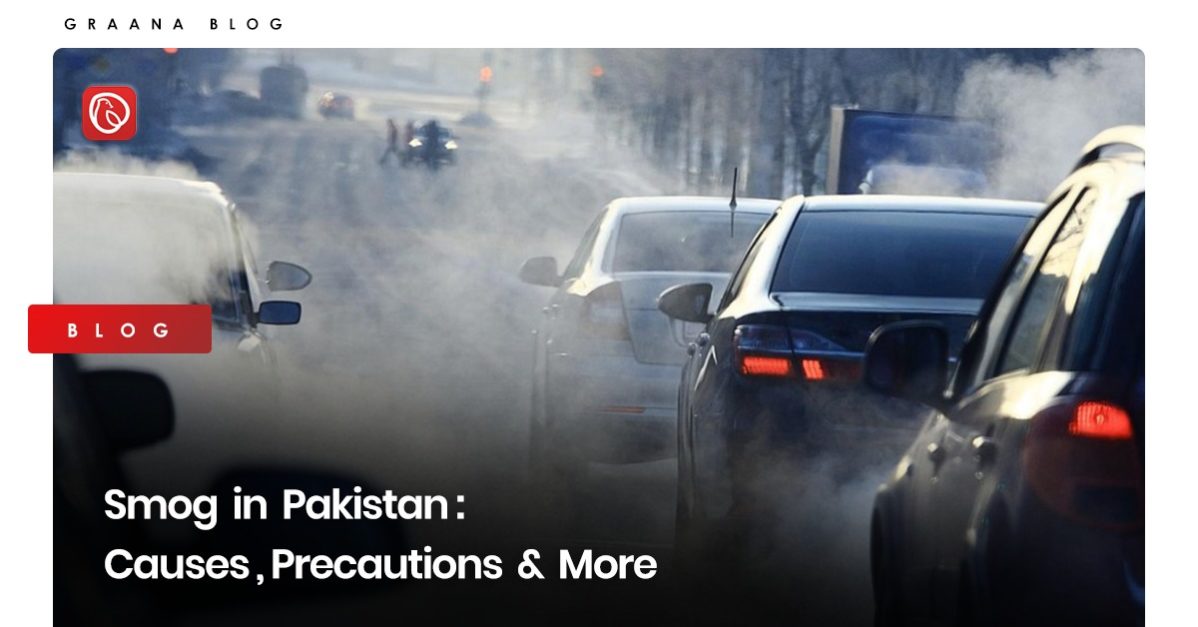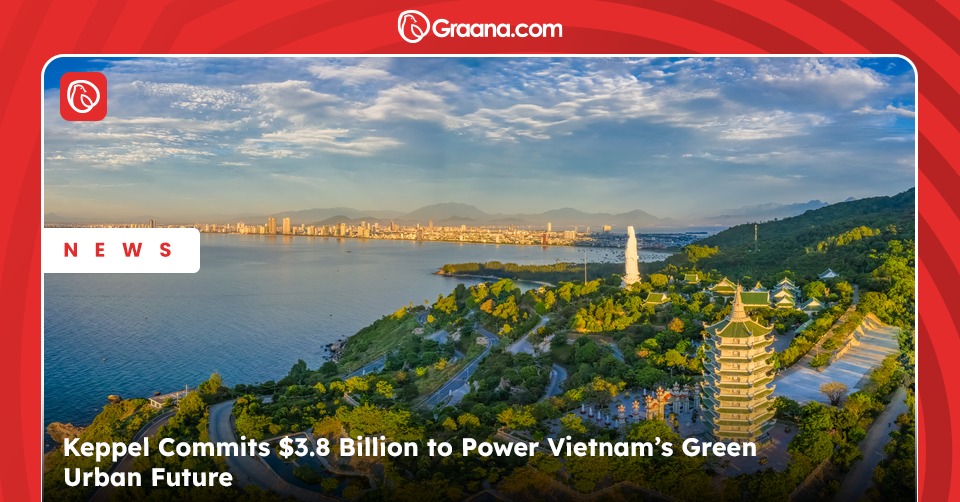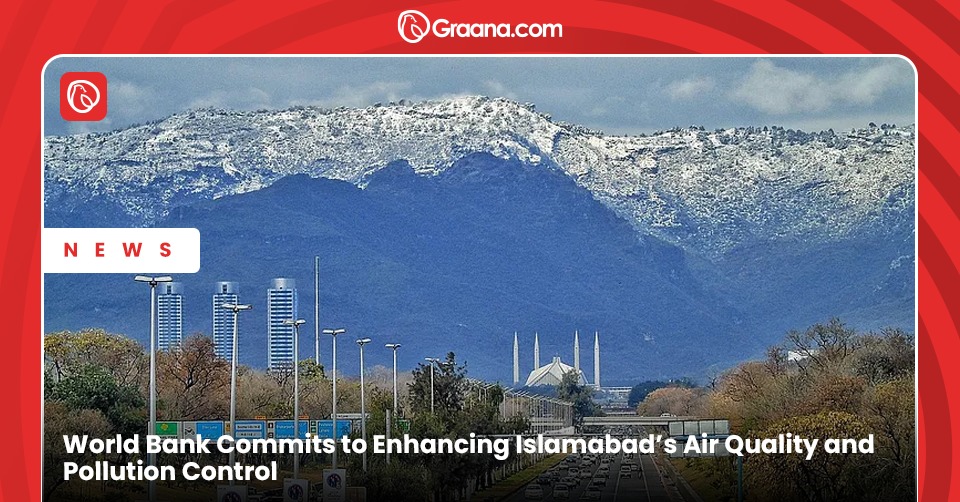In recent months, the major cities of Pakistan, such as Lahore, have been facing a significant increase in smog levels. This has had a significant impact on the daily life of individuals, leading to widespread disruption across multiple cities and sectors.
The smog has also hurt the population’s health, leading to increased respiratory problems, eye irritation, and other issues. Graana.com gives an overview of the smog in Pakistan below, including its causes, precautionary measures to take, and more.
What is Smog?
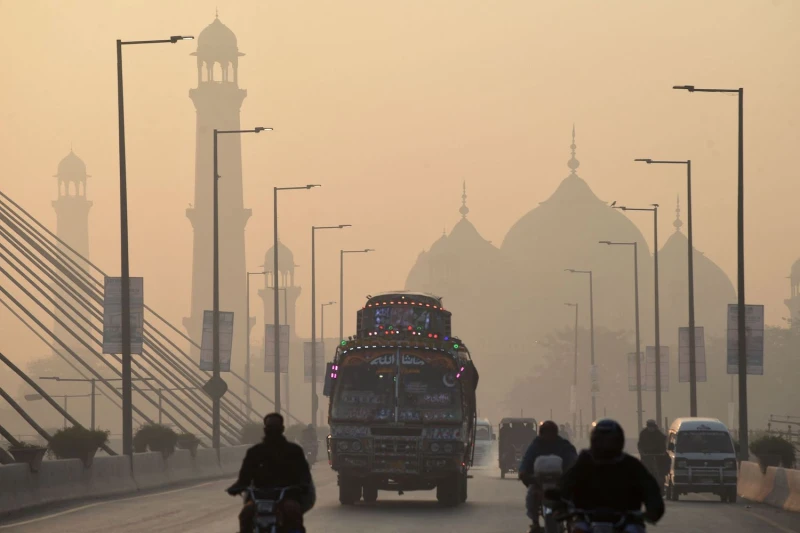
Smog is a specific type of air pollution created by a mixture of pollutants, such as nitrogen oxides, sulphur dioxide, and particulate matter, which reacts with sunlight and heat to form a thick, hazy mixture.
Smog, one of the most common environmental issues in Pakistan, is most commonly seen in large cities, particularly those with high levels of industrial activity, and can adversely affect human health and the environment. Some of these include respiratory problems, eye irritation, and decreased visibility.
How is Smog Measured?
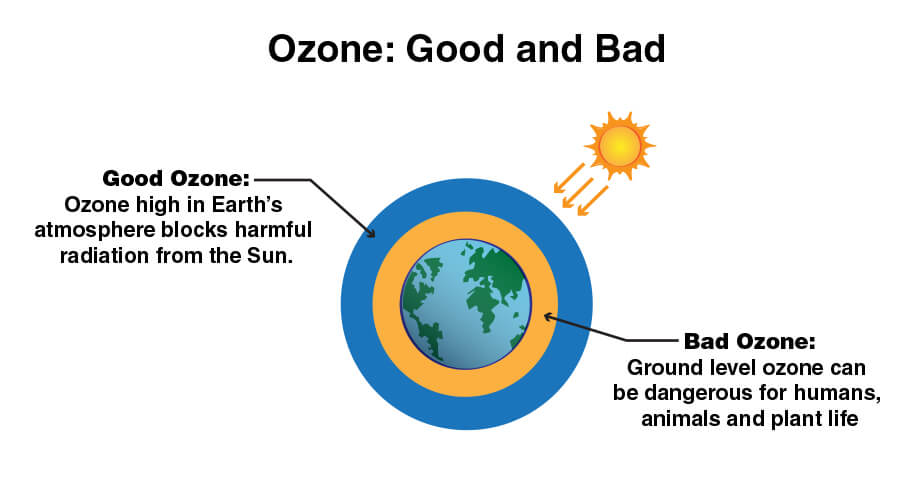
Smog is typically measured by monitoring the levels of various pollutants in the air. Several methods exist, including continuous monitoring stations, mobile monitoring units, passive samplers, and satellite observations. The measurement data collected by these methods are used to calculate an Air Quality Index (AQI), a scale used to communicate the level of air pollution to the public.
It is based on a numerical index that ranges from 0 to 500, with higher numbers indicating higher levels of air pollution. The AQI provides information on the impact of air pollution on health and the precautions people should take accordingly.
In recent years, the AQI in Pakistan has been of high concern, particularly in major cities such as Lahore, due to high smog levels. It has often exceeded safe levels, leading to health concerns for the population.
The AQI scale is divided into several categories, each with a different level of air pollution and associated effects on health:
- Good (0-50): Air quality is considered to be good and poses little to no health risk.
- Moderate (51-100): Air quality is acceptable but may pose some health risks for certain groups, such as people with asthma or heart disease.
- Unhealthy for Sensitive Groups (101-150): Air quality is considered unhealthy for children, the elderly, and people with heart or lung disease.
- Unhealthy (151-200): Air quality is considered unhealthy for everyone and may cause significant health problems, especially for people with heart or lung disease.
- Very Unhealthy (201-300): Air quality is considered very unhealthy and may cause serious problems, even for healthy people.
- Hazardous (301-500): Air quality is considered hazardous and may cause serious health problems and even death.
Impact of Smog in Pakistan
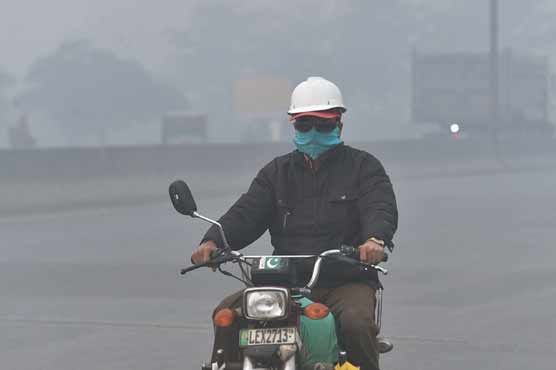
The increase in smog levels has affected a number of important sectors in the country, including transportation and education. Due to the widespread smog and the health concerns that followed, the city officials in Lahore had to shut down educational institutions for several days.
Besides Lahore, other cities have also been impacted. The visibility in the cities has been compromised, causing issues with transportation and making it difficult for individuals to get around.
Besides local commuting, there have been issues in international travel as well, with several flights being redirected to the Islamabad airport because of the prevailing smog that blanketed Lahore and its adjoining areas.
In response to the dangerous levels of smog in cities, the government has advised the population to take necessary precautions, such as wearing masks, to reduce the risk of health problems.
Reasons for Smog in Pakistan
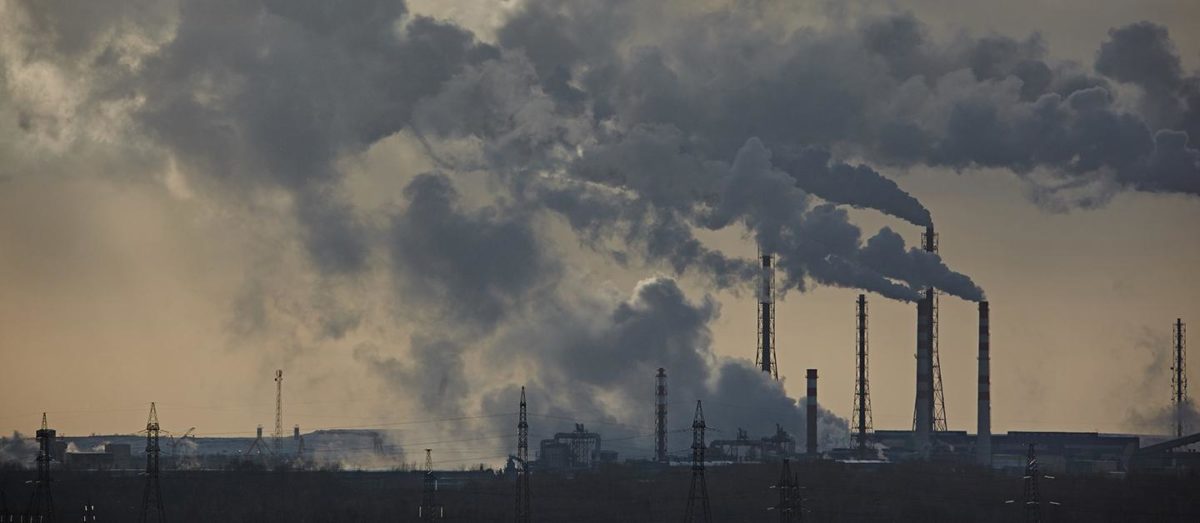
The following are the most common reasons for smog in the nation:
Agricultural Burning
The practice of burning crop residue in fields after harvest is a common cause of smog in Pakistan. The burning releases harmful pollutants into the air, which contributes to the thick haze seen in many parts of the country.
Industrial Emissions
Industries in Pakistan, particularly those in the manufacturing and energy sectors, emit a large number of pollutants into the air. These pollutants, such as carbon monoxide and sulphur dioxide, contribute to the smog problem in the country.
Vehicular Pollution
The increasing number of vehicles on the roads in Pakistan is a major contributor to air pollution and smog. Vehicles emit harmful pollutants, such as nitrogen oxides and particulate matter, which contribute to the thick haze seen in many cities.
Construction Activities
Dust generated by construction activities and roadways, as well as industrial and vehicular emissions, contribute to the smog problem in Pakistan. Dust particles can become trapped in the atmosphere, leading to reduced visibility and poor air quality.
Environmental Effects of Smog in Pakistan
The smog affects not only human health but also the environment. The thick haze created by smog reduces visibility, causing transportation problems and hazardous driving conditions.
It also contributes to climate change by trapping heat and reducing the amount of sunlight that reaches the earth’s surface. Mentioned below are the environmental effects of smog in Pakistan:
Poor Air Quality
Smog in Pakistan contributes to poor air quality, which can have negative impacts on human health, especially if individuals have prolonged exposure to it.
Reduced Visibility
Smog can reduce visibility, making it difficult for individuals to see clearly. This can lead to increased accidents and safety risks, particularly for drivers.
Damage to Plants and Crops
Smog can also negatively impact plants and crops, reducing their growth and productivity. This can negatively impact agriculture, leading to food and economic insecurity.
Harm to Wildlife
Smog can also affect wildlife, particularly birds, by reducing visibility and causing respiratory problems.
Climate Change
The pollutants released into the air by smog can contribute to climate change, affecting the global environment and leading to long-term consequences.
Economic Impacts
Smog can also lead to decreased tourism and reduced economic productivity. This can negatively impact local economies and reduce economic growth.
Measures to Reduce Smog in Pakistan
The are some precautionary measures everyone should take to reduce the smog in major cities of Pakistan:
Reduce the Use of Fossil Fuels
The use of fossil fuels, such as coal and petroleum, releases large amounts of harmful pollutants into the air. To reduce smog, individuals and organisations can take steps to reduce their use of these fuels, such as using alternative energy sources or limiting energy consumption.
Use Public Transportation More Often
Encouraging the use of public transportation can help decrease smog by reducing the number of vehicles on the road. This can be achieved by investing in public transportation infrastructure and providing incentives for individuals to use it.
Proper Disposal of Agricultural Waste
The proper disposal of agricultural waste, such as crop residue, can lower smog levels by reducing the number of burnings in fields. This can be done through the implementation of waste management practices that encourage the recycling and reuse of waste.
Implement Industrial Pollution Controls
Industries can reduce their pollution levels by upgrading their technology, using alternative energy sources, and properly disposing waste. The government can also play a role by enforcing stricter regulations and penalties for industries that violate pollution control standards.
Plant More Trees
Planting trees and other vegetation can help reduce smog by absorbing harmful pollutants from the air.
Government’s Response to Smog in Pakistan
The government of Pakistan has taken steps to address the issue of smog by implementing policies and regulations aimed at reducing air pollution.
These measures include stricter emission standards for vehicles and industries, as well as incentives for the use of alternative energy sources. However, there is much more that can be done to combat the problem of smog in Pakistan.
Implementing Regulations and Standards
The government can set further regulations standards. It should limit the number of pollutants released into the air by industries and vehicles. This can help reduce the overall level of smog in the country.
Encouraging Alternative Energy Sources
The government can also encourage the use of alternative energy sources, such as solar and wind power, to reduce the use of fossil fuels and smog.
Providing Incentives for Public Transportation
Pakistan’s government can provide incentives for individuals to use public transportation. It includes subsidies or tax credits, to reduce the number of vehicles on the road and smog.
Supporting Waste Management Efforts
It can also support waste management efforts to reduce the number of agricultural burnings and smog. This can include providing resources and funding for waste management infrastructure.
Planting Trees and Greenery
The government can encourage planting trees and other vegetation to reduce smog by absorbing harmful pollutants from the air.
Education and Awareness Campaigns
It can also play a role in educating the public about the impact of smog and promoting awareness about the need for individuals and organisations to take action to reduce it.
The Bottom Line
In conclusion, smog in Pakistan is a growing problem that requires immediate attention. At the same time, there are numerous reasons for the increase in smog. Individuals, organizations, and the government need to work together to address this issue. Also, steps should be taken to protect and expanding the urban green cover.
Follow Graana blog for more information.
FAQ
Is there smog in Pakistan?
Yes, Pakistan experiences smog in certain regions, particularly during the winter months.
What is the cause of smog in Pakistan?
The primary cause of smog in Pakistan is a combination of factors, including industrial pollution, vehicle emissions, crop burning, and weather conditions. These factors contribute to the accumulation of pollutants such as particulate matter, nitrogen oxides, sulfur dioxide, and volatile organic compounds in the air.
Which type of smog is in Pakistan?
The smog that typically occurs in Pakistan is known as winter smog or “seasonal smog.” It is characterized by a dense haze and reduced visibility, often accompanied by high levels of air pollution.
When does smog start in Pakistan?
The onset of smog in Pakistan varies from year to year but is generally observed during the months of October to February, with peak levels occurring in November and December. However, it is important to note that meteorological conditions and local factors can influence the exact timing and severity of smog.
